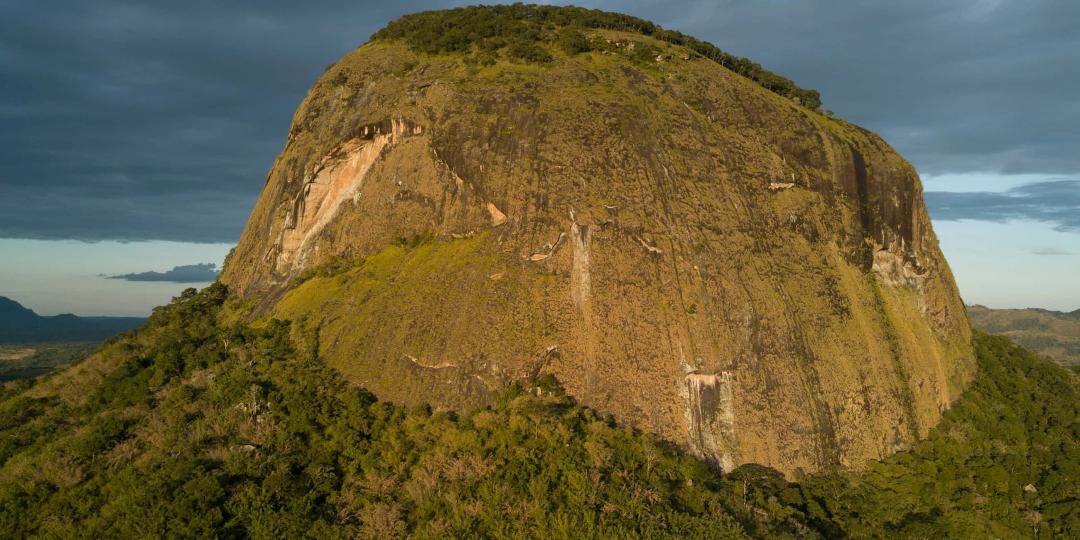Last month, a team of biologists, logistical crew, researchers and plant experts were led on their first expedition to Mount Lico in Mozambique by Dr Julian Bayliss, from Oxford Brookes University in the UK, where an undisturbed tropical rainforest was discovered in the heart of a volcano.
Bayliss was looking at satellite imagery from Google Earth when he first spotted an undisturbed tropical rainforest in Africa. Bayliss, Oxford Brookes University, is known for having found Mount Mabu in Mozambique, the largest rainforest in southern Africa, as well as a number of new species of butterflies and other creatures in the area since then.

Rainforests are the oldest living biomes on Earth, containing roughly half of the known species of life, storing more carbon for longer periods of time. Some rainforests date back to the dinosaur age, virtually all show signs of past human activity. As for an undisturbed rainforest, Bayliss told Jeff Barbee from The Guardian he remembers thinking: “What would a forest like that look like?”
His answer, Mount Lico, with its circling wall rising 700m above the plain, raised a series of questions in terms of accessibility. Therefore, Bayliss decided to focus on the shorter 125m cliff on the one side, and to put together an expedition that would place scientists on the top of Mount Lico via vertical rock.
It took two years to assemble the 28-person team for the first expedition.
Jules Lines and Mike Robertson, well-known professional climbers in the UK scaled the rock face above the scientists’ base camp and, after securing two ropes, they patiently taught the scientists how to get up and down safely.
Dr Simon Willcock, from Bangor University in Wales knew of no other rainforests in Africa that scientists could confidently say have not been disturbed by humans, saying: “It’s a unique site in Africa.” Willcock and his colleague, Dr Phil Platts from the University of York, dug for two days to get to the rainforest bedrock to read the soil layers. Many of the plants that grew on Lico, every fire that burned and even the millions of droppings from caterpillars are all recorded in the soil.
“This forest provides a unique insight into the effects of climate change on forests over time,” said Platts.
The team was back at the base camp after ten days of discovery. The hole in the forest had been refilled, the topsoil replaced, and Colin Congdon, a veteran lepidopterist was comparing findings with Bayliss. Among their findings, was Lico’s first confirmed new species: a butterfly. The scientists expect to it be far from the only one. There is a line-up of potential new species to be confirmed in the months to come, from frogs to snakes, toads, a snake-like amphibian called a caecilian, a snub-nosed rodent, a shrew, crabs, more butterflies and a flowering plant.
Whilst cataloguing potential new fish species, Vanessa Muranga, a 27-year-old Marine Biologist from Mozambique’s Natural History Museum said: “It’s so exciting when you find something that might be new.”
Mount Lico contains further mysteries, such as partly buried ancient pots that the team discovered near the source of the main stream. However, according to the local community, no one in memory or legend has ever been on top of the mountain. Anthropologists from Mozambique’s Natural History Museum are investigating as to how these ancient pots got to be there.
Bayliss believes Lico could be one of the most pristine forests on Earth, reports The Guardian.
The project consisted of an academic partnership between 13 universities, museums and research institutions on three continents. Funding was split by Ranulph Fiennes’s Transglobe Expedition Trust, UK-based Biocensus, and the African Butterfly Research Institute.
























